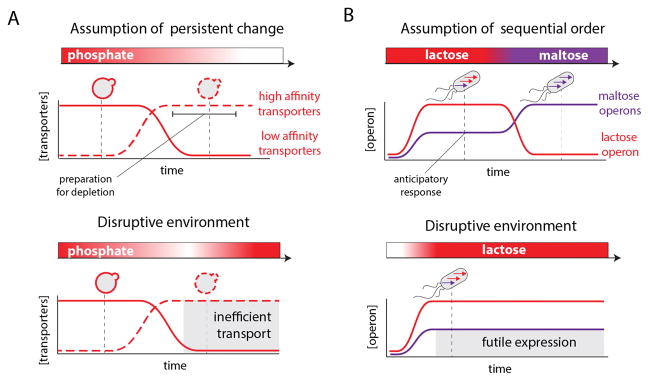Figure 2.
Cell response strategies to changing environments highlight the underlying “assumptions” made by cells regarding dynamic changes in their environments. A: The dual phosphate transporter system in yeast is optimized for gradual decrease in availability of extracellular phosphate. The switch between low and high affinity transporters takes place at intermediate concentration of extracellular phosphate due to decline in intracellular levels of phosphate (upper panel). This switch allows cells to prepare to the stress of phosphate depletion before it actually occurs [9]. The underlying regulatory network leads to a maladaptive response if depletion is transient (lower panel). This maladaptive response to transient phosphate depletion underlines the anticipatory aspect of the response. Cells decode short-term depletion, as an indication that starvation will persist. B: The response of wild-type E. coli to different sugars reflects an adaption to the sequential order of nutrient appearance typical to the mammalian digestive tract (lower panel). E. coli induces the maltose operon to an intermediate level upon exposure to lactose as an anticipatory response to the future arrival of maltose [13, 15]. This regulatory circuitry is maladaptive in an environment that lacks maltose and is selected against within a few hundred generations. This maladaptive response to persistent lactose underlines the anticipatory aspect of the response. Cells decode lactose as an environmental cue for the future arrival of maltose.

